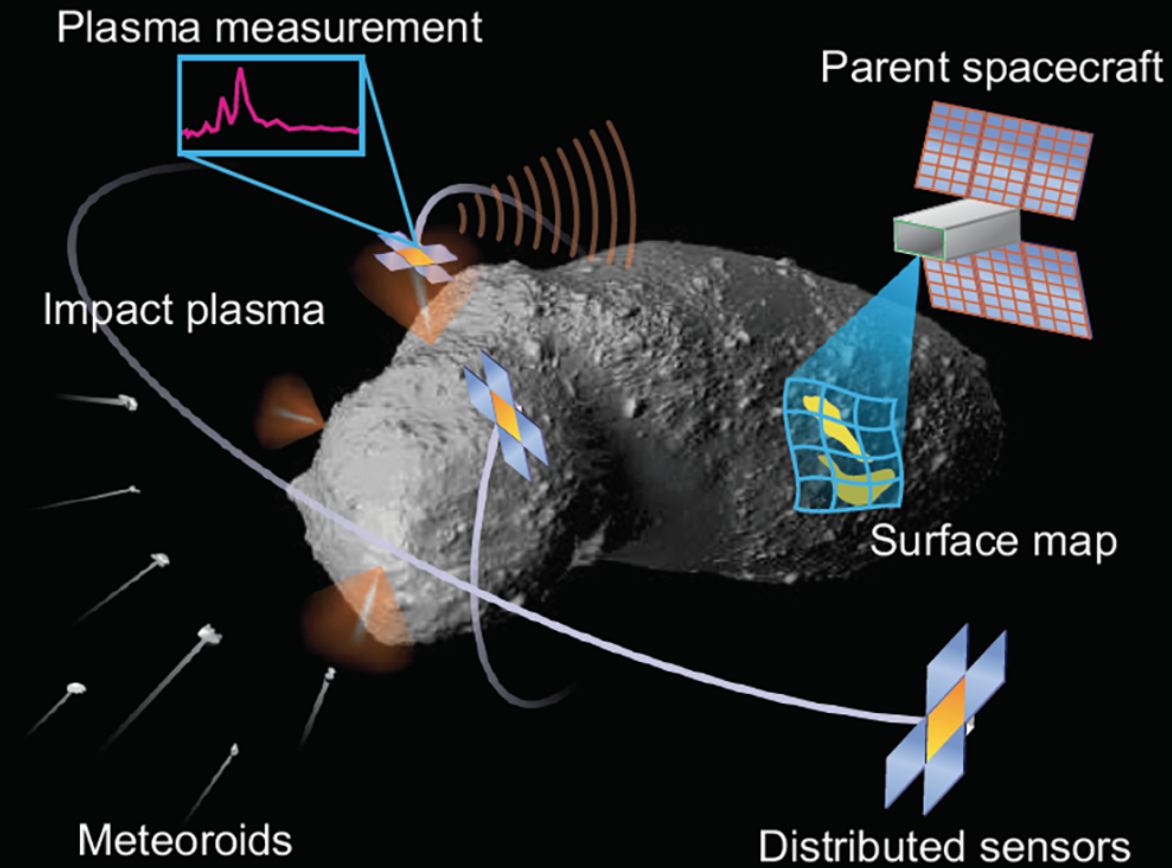It seems like every month, a new story appears announcing the discovery of thousands of new asteroids. Tracking these small body objects from ground and even space-based telescopes helps follow their overall trajectory. But understanding what they’re made of is much more difficult using such “remote sensing” techniques. To do so, plenty of projects get more up close and personal with the asteroid itself, including one from Dr. Sigrid Elschot and her colleagues from Stanford, which was supported by NASA’s Institute for Advanced Concepts back in 2018. It uses an advanced suite of plasma sensors to detect an asteroid’s surface composition by utilizing a unique phenomenon – meteoroid impacts.
The project, known as the Meteroid Impact Detection for Exploration of Asteroids (MIDEA), has an architecture that has become more prominent as of late – a swarm of smallsats coordinated around a mothership. In this case, the smallsats are plasma sensors with one specific purpose: to detect characteristics of the plume of debris from the asteroid after a meteoroid hits it.
Those impacts happen more often than you might think. Estimates from the authors suggest that they could map the surface composition of an asteroid down to 1 m resolution in around 50 days. And that’s after accounting for some decreases in detections due to orbital constraints and other considerations.
So, how would this architecture work? First, there would be a main spacecraft, originally envisioned as a Cubesat, that weighs around 50 kg. It would use a standard Cubesat propulsion system, such as an ion drive, to make its way to an asteroid. Once there, it would hover a few hundred meters above the surface and deploy a series of small sensor satellites.
According to the calculations in the paper, these sensor sats would weigh about 250 g, allowing them to use traditional materials such as rigid PCB boards rather than flexible ones that don’t have as much proven flight history. On each, there would be a sensor whose job is to face the asteroid no matter where it is in its orbital path. This feat of astronautical engineering is tricky, as it would also be required to point its solar arrays at the Sun to ensure they provide the 1-5 W needed to operate the sensors and communication arrays.
Each sensor satellite would also have an attitude control technique called “controlled reflectivity.” The satellite would adjust the sensor’s pointing direction by actuating a reflective surface either towards or away from the Sun and using that reflective pressure to point itself in the right direction.
A series of these sensors is necessary to capture any plume from a meteoroid impact from as many different angles as possible, allowing the sensors to collect as much data as possible. The sensors would then relay the data to the central hub spacecraft, which could collate the data streams and send a complete package back to Earth. On Earth, the data could be analyzed using a time-of-flight mass spectrometer to determine the makeup of the plume and, therefore, the part of the surface it came from.
While that sounds relatively simple in theory, in practice, there are many unknowns still to work through, including how to handle controlling all the different satellites in orbit around a single asteroid. That would include an overall architecture design that could help implement other subsystems as well.
For now, though, that development is on hold, as MIDEA has not yet received a Phase II grant from NIAC or funding from any other source. Maybe someday, the thousands of asteroids in our vicinity will be the target of swarms of little orbiters or their own.
Learn More:
Lee & Close – METEOROID IMPACT DETECTION FOR EXPLORATION OF ASTEROIDS (MIDEA)
UT – We Could SCATTER CubeSats Around Uranus To Track How It Changes
UT – Water Found on the Surface of an Asteroid
UT – What Are Asteroids Made Of?
Lead Image:
Artist’s depiction of the MIDEA mission.
Credit – Sigrid Close (Elschot)

